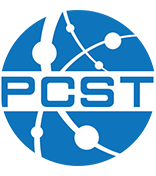Time for a new audience: Boorna Waanginy, Case Study of an Art/Science/Culture phenomenon
Author: Mandy Bamford – Bamford Consulting Ecologists, Australia
Can art and non-traditional partnerships communicate science to a broad audience? Can they be used to make people care, and take action to protect biodiversity?
Traditionally, biological and geological sciences are communicated to small and dedicated audiences. In contrast, Western Australia’s ‘Boorna Waanginy: The Trees Speak’ used cutting edge technology and a collaborative team of artists, scientists and Indigenous Elders to tell the story of south-western Australia’s unique biodiversity through geological time, and explore the parallels between Indigenous knowledge and western science. Boorna Waanginy, the opening event of Perth Festival in 2017 and 2019, was a free, immersive light and sound installation along a one and a half kilometre walk through King’s Park in Western Australia. Audiences were exposed to a walk-though experience projected on the trees, where the voices of Indigenous people explained the six Noongar seasons and the species which appear in them. They were then challenged with beautiful, yet chilling visuals depicting threats to biodiversity and were called to act to protect it. In the finale, they were shown stories of people who were already taking action. Following a highly successful season in 2017 which attracted 110,000 people, Boorna Waanginy was updated and remounted in February 2019. In 2019, the show involved thousands of school children and included ‘Ground Beneath Our Feet’, a practical component to help people take on-ground action to help biodiversity. The show doubled its audience to over 220,000 over four nights and was voted the most popular event at the Festival.
Collaboration with non-traditional partners such as the arts, culture and humanities can engage new audiences and open up powerful opportunities for the communication of science. The presentation will include footage of the event, and the successes, challenges, learnings, and future applications of this approach will be discussed.
The author has not yet submitted a copy of the full paper.
Presentation type: Visual Presentation
Theme: Time
